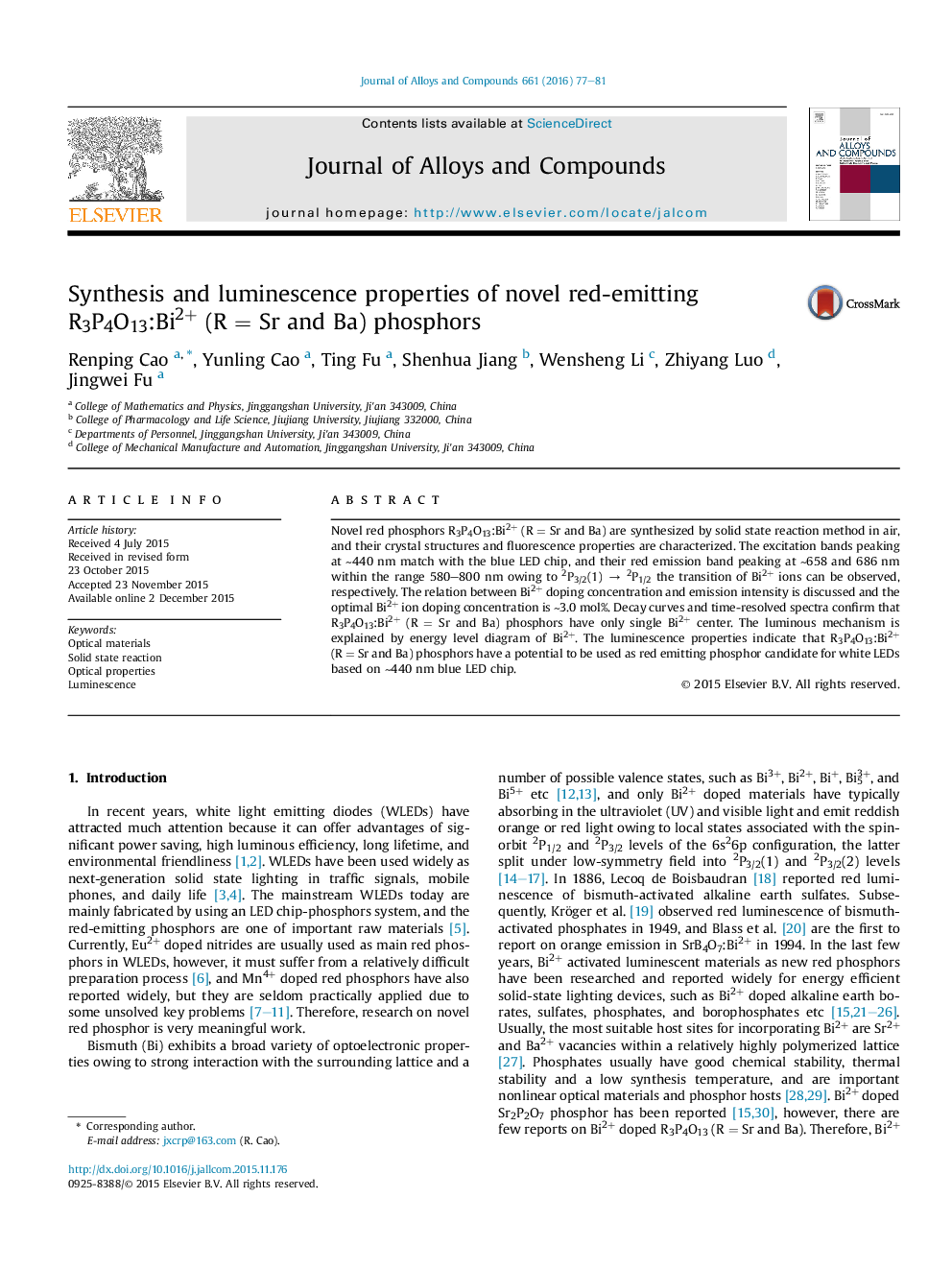| Article ID | Journal | Published Year | Pages | File Type |
|---|---|---|---|---|
| 1607021 | Journal of Alloys and Compounds | 2016 | 5 Pages |
•R3P4O13:Bi2+ (R = Sr and Ba) phosphors are synthesized by solid state reaction method in air.•The red emission owing to 2P3/2(1) → 2P1/2 the transition of Bi2+ ions can be observed.•The strong excitation bands peaking at ∼450 nm match with the 450 nm blue LED chip.•The luminous mechanism is explained by energy level diagram of Bi2+ ions.
Novel red phosphors R3P4O13:Bi2+ (R = Sr and Ba) are synthesized by solid state reaction method in air, and their crystal structures and fluorescence properties are characterized. The excitation bands peaking at ∼440 nm match with the blue LED chip, and their red emission band peaking at ∼658 and 686 nm within the range 580–800 nm owing to 2P3/2(1) → 2P1/2 the transition of Bi2+ ions can be observed, respectively. The relation between Bi2+ doping concentration and emission intensity is discussed and the optimal Bi2+ ion doping concentration is ∼3.0 mol%. Decay curves and time-resolved spectra confirm that R3P4O13:Bi2+ (R = Sr and Ba) phosphors have only single Bi2+ center. The luminous mechanism is explained by energy level diagram of Bi2+. The luminescence properties indicate that R3P4O13:Bi2+ (R = Sr and Ba) phosphors have a potential to be used as red emitting phosphor candidate for white LEDs based on ∼440 nm blue LED chip.
Graphical abstractPL spectra and chromaticity coordinate of Novel red phosphors R3P4O13:Bi2+ (R = Sr and Ba) with excitation 445 and 435 nm, respectively.Figure optionsDownload full-size imageDownload as PowerPoint slide
